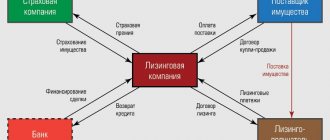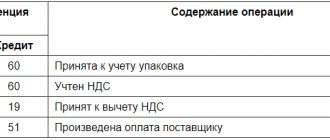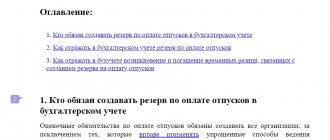Rights to use software
In relation to the purchase of a computer program, accounting entries reflect the protected results of intellectual activity (Clause 1 of Article 1225 of the Civil Code of the Russian Federation). This may include accounting programs. The rights to use such programs are transferred by concluding a license agreement (Article 1235 of the Civil Code of the Russian Federation).
A license agreement may provide for the transfer of both exclusive and non-exclusive rights (clause 1 of Article 1236 of the Civil Code of the Russian Federation).
In the latter case, we are talking about a simple (non-exclusive) license. It does not transfer the ownership of the result of intellectual activity, but only the right to use such a result.
Acquisition of licenses for intangible assets
The procedure for purchasing an intangible asset involves purchasing a license that gives the customer a non-exclusive right to use the product.
An organization can obtain an intangible asset in one of the following ways:
- by purchase under a license agreement;
- according to the law (during reorganization or recovery of the property of the copyright holder);
- if the intangible asset is created by the organization’s own resources.
The purchase of a license is carried out on the basis of a license agreement, to which is attached an act of acceptance and transfer of non-exclusive rights. The parties to the agreement are the licensee (copyright) and the licensor (copyright holder). In the license acquisition agreement, the signatories record:
- fact of permission to use intangible assets;
- the period during which the licensee has the right to use the product;
- conditions, payment procedure, amount of remuneration (or the fact that the transaction is free of charge).
Expenses for the acquisition of licenses are classified as expenses for core activities. Intangible assets for which the right of non-exclusive use has been obtained are recorded in an off-balance sheet account at their value in accordance with the agreement.
Accounting Software: Postings
Reflection of the right to use a computer program by postings in accounting depends on the type of rights that are transferred.
Situation 1
If the exclusive rights to a software product are transferred to an organization under a licensing agreement, then if it meets the criteria of an intangible asset (IMA) (clause 3 of PBU 14/2007), it is reflected in account 04 “Intangible assets” (Order of the Ministry of Finance dated October 31, 2000 No. 94n) :
| Operation | Account debit | Account credit |
| Purchasing software | 08 “Investments in non-current assets”, sub-account “Acquisition of intangible assets” | 60 “Settlements with suppliers and contractors” |
| The software product was accepted for accounting as part of intangible assets | 04 | 08, subaccount “Purchase of intangible assets” |
If it is possible to determine the useful life of intangible assets, such an asset is depreciated in one of 3 ways provided for in clause 28 of PBU 14/2007:
Debit of accounts 26 “General business expenses”/44 “Sales expenses”, etc. – Credit of account 05 “Amortization of intangible assets”.
Also see “Rules for the valuation of intangible assets in accounting.”
Situation 2
In accounting, the entry when purchasing a program with non-exclusive rights depends on the procedure for payment for it (clause 39 of PBU 14/2007):
| Periodic payments | Current expense accounts are used: Dt 26, 44, etc. – Kt 60 |
| Fixed one-time payment transferred | The amount of the one-time payment is preliminarily taken into account in deferred expenses: Dt 97 “Future expenses” - Kt 60 |
Then, during the term of the agreement, the amount reflected in account 97 is written off as expenses for the reporting periods:
Dt 26, 44, etc. – Kt 97
If the term is not specified in the contract, the organization sets it itself.
Popular programs do not apply to intangible assets
The vast majority of accounting, warehouse and other programs, regulatory frameworks, antiviruses, as well as electronic reporting services cannot be classified as intangible assets.
The fact is that by purchasing such software, organizations and entrepreneurs do not receive exclusive rights to it. Such rights remain with the developer, and the client receives only a license to use. This is usually clearly stated in the license agreement that is concluded at the time of purchase of the program. The absence of exclusive rights to an object means that one of the conditions for recognizing intangible assets (hereinafter referred to as intangible assets) has not been met. This conclusion follows from paragraph 3 of PBU 14/2007 “Accounting for intangible assets” and from paragraph 3 of Article 257 of the Tax Code of the Russian Federation. Accordingly, in both accounting and tax accounting, the cost of the program must be written off as expenses.
Buying a computer with software
When purchasing the computer itself, depending on the cost, it is taken into account as part of the OS or MPZ.
If programs are included as a separate line in the computer delivery documents, they must be taken into account in the order for accounting programs (see above). But nuances are possible.
For example, if without the specified software the computer cannot be used for its intended purpose, and the program itself cannot be reinstalled on another computer, it can be taken into account in the cost of the computer.
If the cost of the software is not indicated at all, it is not taken into account separately, but is included in the initial cost of the purchased computer and reflected in the cost of the operating system or inventory on account 01 “Fixed Assets” or account 10 “Materials,” respectively.
Read also
12.08.2019
How to purchase software in the 1C 8.3 Accounting program
There is such a thing as purchasing 1C software. In fact, what is purchased is not the product itself, but an official license for use, since the exclusive right to the software belongs directly to the developer company. The fact of acquisition cannot be designated as an intangible asset and such a right is considered non-exclusive. Let us consider in detail how to reflect the purchase of a non-exclusive right to use the software in the 1C Accounting 8.3 program.
I would like to immediately note that the payment for the software should be classified as deferred expenses (FPR) and written off gradually over the term of the license agreement. If the validity period is not specified in the agreement, then the user organization sets it independently and indicates it in the “Accounting Policy” setting.
So, first we will register the receipt of software in the program. This is done through the document “Receipt of goods and:
Please note that the software item must have the type “Service”.
All fields of the receipt document are filled out as standard, with the exception of the “Accounts” column in the tabular section. Here you need to indicate cost account 97.21 (Other deferred expenses):
If the organization is a VAT payer, then in the “VAT Account” field the account must be indicated - 19.04. When entering data, you will need to create a new detail in the “Future expenses” field and fill out the fields in detail:
- Name – must reflect the name of the software;
- Group – the folder where this item will be stored;
- Type for OU – indicate “Other”;
- Type of asset in the balance sheet – other current assets;
- Amount – must be specified;
- Recognition of expenses - the period (month, quarter) of asset write-off is indicated;
- Start of write-off – select the date from which the write-off will begin;
- End – select the date when the write-off ends;
- Cost account – 26 (General expenses);
- Cost items – indicate other costs.
Based on this, the cost of the purchased software will immediately be included in the BPR. After entering the data, we carry out “Receipt of goods and services” and look at the movement of the document:
In this case, the receipt of the asset is reflected in account 97.21 without taking into account VAT, which is allocated as a separate posting to account 19.04. Let's move on to writing off future expenses. This processing is routine and is carried out on the basis of the completed data at the end of the reporting month using the “Month Closing” document:
The write-off of the RBP amount is determined automatically by the program. After posting, the document generates a transaction for moving the partial value of the asset from account 97.21 to account 26, as was previously specified in the receipt document:
In the “Calculation of write-off of deferred expenses” tab, you can view the calculation of the write-off of RBP with a reflection of all parameters, as well as the written-off amount and balance. Through the “Month Closing” processing, an automatic partial write-off of the cost will occur until full repayment. Each subsequent processing at the end of the month will be reflected in the “Routine Operations” journal. You can find the journal if you go to the “Operations” menu tab, then the “Month Closing” section.
Reflection of 1C ERP purchase
Go to the “Purchases” section and select “Receipts (acts, invoices)”.
In the window that appears, click on the “Create” button and select the “Services (act)” view.
Our team provides consulting, configuration and implementation services for 1C. You can contact us by phone +7 499 350 29 00 . Services and prices can be seen at the link. We will be happy to help you!
The counterparty in our case will be. Add a line to the services table and select the item “1C:ERP Program”. We will also indicate here that the purchase amount will be 360 thousand rubles. and additional 18% VAT.
In the last column “Account”, it is very important to correctly indicate all the data. Click on the corresponding hyperlink, and a window for editing this value will open in front of you.
We will indicate 97.21 expense account, including tax accounting.
To fill in the “Future expenses” fields, you need to add a new position to the directory of the same name, if this has not been done previously. In his card we indicated the price of the software, the period of its write-off, as well as the account to which it will be paid. We will write off expenses every month.
Now that all the data in the receipt document is indicated, you can post it and register the invoice. As a result, the wiring shown in the image below will be formed.
Writing off expenses for purchasing the program
Costs for the purchase of ERP will be written off to account 26 starting from August 25, 2021 to August 25, 2021 on a monthly basis. We indicated this data in the element card “1C:ERP Program” in the “Future Expenses” directory.
This write-off is carried out automatically by the corresponding regulatory operation, which is performed by the “Month Closing” processing. It is located in the "Operations" program menu.
When closing August 2021 (since we start writing off exactly from this month), the item “Write off deferred expenses” will appear in the “Closing the month” processing. After the closing has been completed successfully, you can click on it and view the transactions made.
As we see, the amount for August 2021 was debited from account 97.21 to account 26. This routine operation at the end of the month will be carried out until August 2021 inclusive.







